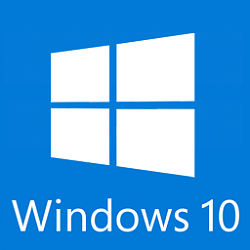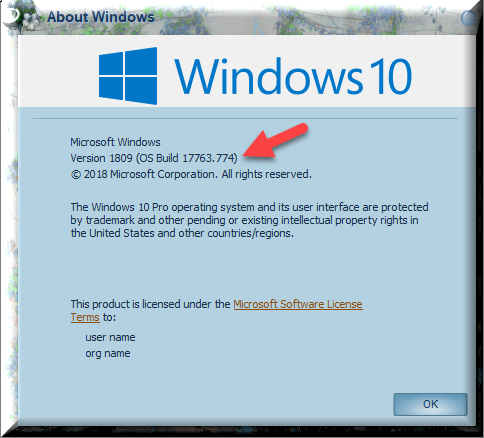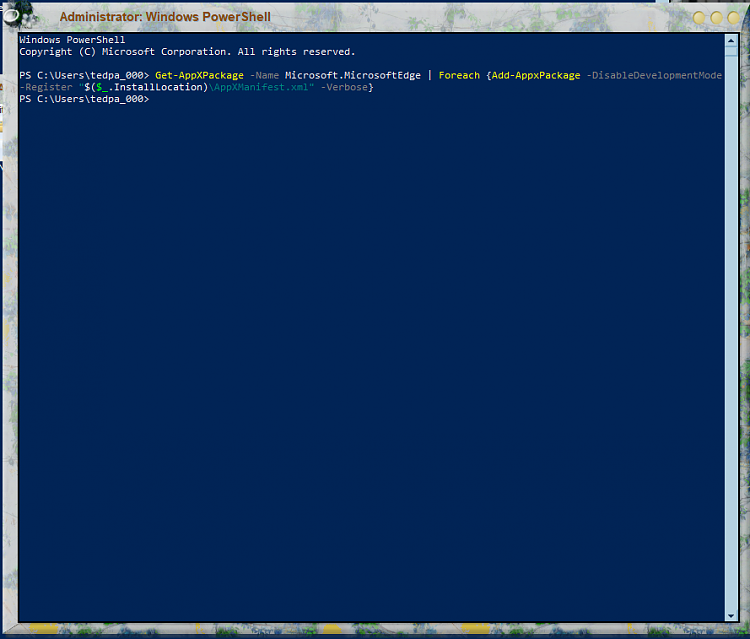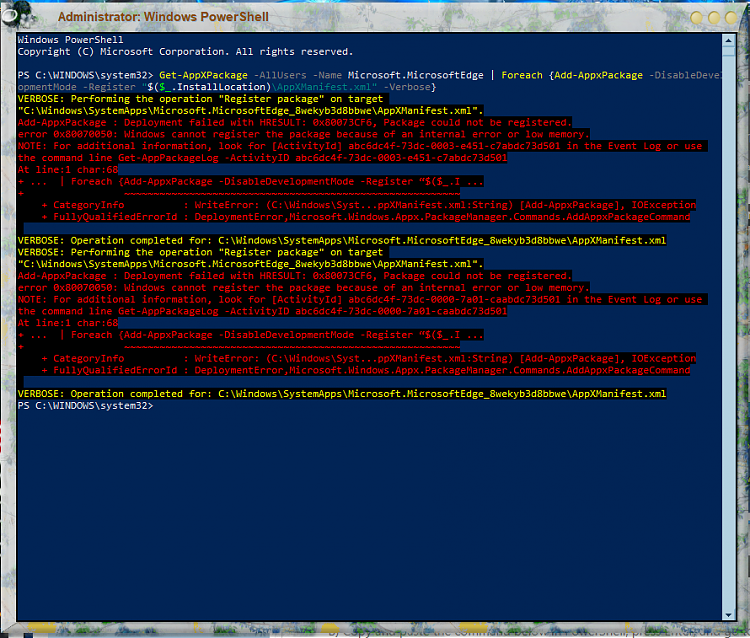September 24, 2019 - KB4516077 (OS Build 17763.774)
Applies to: Windows 10 version 1809, Windows Server version 1809, Windows Server 2019 all versions
Note Follow @WindowsUpdate to find out when new content is published to the release information dashboard.
Starting with update KB4497934, we are introducing functionality that allows you to decide when to install a feature update. You control when you get a feature update while simultaneously keeping your devices up to date. Feature updates that are available for eligible devices will appear in a separate module on the Windows Update page (Settings > Update & Security > Windows Update). If you would like to get an available update right away, select Download and install now. To find out more about this feature, please go to this blog.
When Windows 10 devices are at, or within several months of reaching, end of service, Windows Update will begin to automatically initiate a feature update. This keeps those devices supported and receiving the monthly updates that are critical to device security and ecosystem health.
ePub support ending in Microsoft Edge
Microsoft Edge will end support for e-books that use the .epub file extension over the next several months. For more information, see Download an ePub app to keep reading e-books.
For more information about the various types of Windows updates, such as critical, security, driver, service packs, and so on, please see the following article.
Highlights
- Allows Microsoft Edge to print PDF documents that contain landscape and portrait-oriented pages together correctly.
- Updates an issue that doesn't provide a cursor when you select a text input box using touch.
- Updates an issue that prevents some minimized windows from being restored, closed, or maximized.
- Updates an issue that prevents the Save and Save As options in Microsoft Office 2010 applications from working when high contrast mode is on.
- Updates an issue with incorrect folder and file properties in File Explorer.
- Updates an issue that causes vertical fonts to be larger when printing to a PostScript printer.
- Updates an issue that prevents Microsoft Narrator from opening.
- Updates an issue that occasionally prevents you from changing the display brightness after resuming from Sleep or Hibernation when using certain graphics drivers.
- Updates an issue that causes icons in message box dialogs to appear too large when you choose scaling options in Display settings.
- Updates an issue that may cause the Calculator app to close unexpectedly if you select any available Converter option.
- Updates an issue that causes excessive CPU usage when you switch applications or hover over the Taskbar.
- Updates an issue that causes a dim display after waking from Sleep.
Improvements and fixes
This non-security update includes quality improvements. Key changes include:
- Addresses an issue that prevents the discovery of remote systems associated with a user from working properly.
- Addresses an issue that prevents Microsoft Narrator from opening when the User Account Controls setting is disabled on the Standard User account.
- Addresses an issue to enable Microsoft Edge to print PDF documents that contain landscape and portrait-oriented pages correctly.
- Addresses an issue that occasionally prevents users from changing the display brightness after resuming from Sleep or Hibernation when using certain graphics drivers.
- Addresses an issue with MSCTF.dll that causes an application to stop working.
- Addresses an issue that prevents some minimized windows from interacting, and you cannot restore, close, or maximize them when a system is running with a custom shell.
- Addresses an issue that fails to provide a cursor when you select a text input element using touch.
- Addresses an issue that causes icons in message box dialogs to appear too large when you choose scaling options in Display settings. For more information, see Using Dialog Boxes and Display Scaling in Windows 10.
- Addresses an issue that prevents the Save and Save As options in Microsoft Office 2010 applications from working when high contrast mode is on.
- Addresses an issue that causes File Explorer to report the number or the size of files and folders incorrectly when they use long paths.
- Addresses an issue that causes unnecessary restart requests on servers.
- Addresses an issue with diagnostic data processing during the Windows Out of Box Experience (OOBE) sequence.
- Configures Windows 10 Enterprise for Virtual Desktops (EVD) editions in Azure Active Directory (Azure AD) licensing mode by default. Users who connect to EVD editions must have an EVD license.
- Addresses an issue that prevents an App-V application from opening and displays a network failure error. This issue occurs under certain circumstances, such as when a system's battery is low or there is an unexpected power failure.
- Addresses an issue that prevents a web browser from connecting securely to Windows Server. This occurs when using a client authentication certificate, such as a SHA512-based certificate, and the web browser does not support a signature algorithm that matches the certificate.
- Addresses an issue that may cause the Local Security Authority Subsystem Service (LSASS) to stop working with an “0xc0000005” error.
- Addresses an issue that prevents the BitLocker recovery key from being successfully backed up to Azure Active Directory.
- Addresses an issue that leads to excessive memory utilization in Microsoft Defender Advanced Threat Protection (ATP).
- Addresses a possible compatibility issue when Microsoft Defender Advanced Threat Protection (ATP) accesses case-sensitive Server Message Block (SMB) shares.
- Addresses a rare issue that occurs when the mssecflt.sys driver takes too much space on the kernel stack. This results in the error, "STOP 0x7F: UNEXPECTED_KERNEL_MODE_TRAP", and Parameter 1 is set to “EXCEPTION_DOUBLE_FAULT.”
- Improves the detection accuracy of Microsoft Defender ATP Threat & Vulnerability Management.
- Addresses an issue that gives a Windows Hello for Business user two certificates for authentication during certificate renewal instead of one certificate.
- Addresses an issue that causes the lsass.exe service to stop working, which causes the system to shut down. This occurs when migrating Data Protection API (DPAPI) credentials using dpapimig.exe with the -domain option.
- Addresses an issue that may cause Direct Access servers to use a large amount of non-paged pool memory (pooltag: NDnd).
- Addresses an issue that causes vertical fonts to be larger when printing to a PostScript printer.
- Addresses an issue that prevents Windows from sending a shutdown notification to a Non-Volatile Memory Express (NVMe) drive when the driver unloads using Disable Device in Device Manager.
- Addresses an issue that prevents you from running the Active Directory Diagnostics Data Collector Set from the Performance Monitor for Domain Controllers. This causes the Data Collector Set name to appear empty. Running the Active Directory Diagnostics Data Collector Set returns the error, “The system cannot find the file specified.” Event ID 1023 is logged with the source as Perflib and the following messages:
- “Windows cannot load the extensible counter DLL “C:\Windows\system32\ntdsperf.dll.”
- “The specified module could not be found.”
- Addresses an issue in GetFinalPathNameByHandleW() that prevents Favorites from opening in Internet Explorer 11. This occurs when Favorites are redirected and offline in a client-side caching scenario with enhanced protected mode compatibility (EPM) enabled.
- Addresses an issue in which the product description of Windows Server 2019 was incorrect when queried using slmgr /dlv.
- Addresses an issue that may cause authentication to fail for certificate-based authentication when the certificate authentication includes a cname as part of the pre-authentication request.
- Addresses a Lightweight Directory Access Protocol (LDAP) runtime issue for Domain Controller Locator-style LDAP requests. The error is, “Error retrieving RootDSE attributes, data 8, v4563.”
- Addresses an issue that causes LDAP queries that contain LDAP_MATCHING_RULE_IN_CHAIN (memberof:1.2.840.113556.1.4.1941) to intermittently fail on Windows Server 2019 domain controllers. However, these queries do not fail on domain controllers running previous versions of Windows Server.
- Addresses an issue that causes group membership changes in Active Directory groups to fail. This occurs if the Lightweight Directory Access Protocol (LDAP) client uses the Security Identifier (SID) Distinguished Name (DN) syntax after installing previous versions of NTDSAI.DLL. In this scenario, an issue with the LdapPermissiveModify (LDAP_SERVER_PERMISSIVE_MODIFY_OID) control causes Active Directory to incorrectly return a “SUCCESS” status even though the group membership change did not occur.
- Addresses an issue in which the Set-AdfsSslCertificate script is successful. However, it throws an exception during resource cleanup because the target server-side endpoint is no longer there.
- Addresses an issue that causes File Explorer to show a regular file icon for files marked with FILE_ATTRIBUTE_OFFLINE instead of the expected placeholder icon.
- Addresses an issue that may cause the Calculator app to close unexpectedly if you select any available Converter option.
- Addresses an issue that causes excessive central processing unit (CPU) usage when users switch applications or hover over the Taskbar.
- Addresses an issue with applications and scripts that call the NetQueryDisplayInformation API or the WinNT provider equivalent. They may fail to return results after the first page of data, often 50 or 100 entries. When requesting additional pages, you may receive the error, “1359: an internal error occurred.” This solution also resolves this issue for all the updates on or before June 18, 2019.
- Addresses an issue with the Origin request header behavior in Internet Explorer when you make cross-origin resource sharing (CORS) requests that use redirected resources in internal subnets.
- Addresses an issue that causes the display’s maximum brightness to appear as 50% or less after completing the out-of-box experience (OOBE) and then waking from Sleep.
- Allows auditing of security events for clients managed by mobile device management (MDM) for security monitoring and incident response activities.
- Addresses an issue that prevents Microsoft App-V from handling a parameter of the CreateProcess API properly, which prevents the virtual process from opening.
- [ADDED 10/1] Addresses an issue that causes a device to stop working when opening files from a network drive that has client-side caching enabled. This issue may occur when the device has certain third-party antivirus products installed and the drive is backed by a server that is not a Microsoft Server Message Block (SMB) server. The error code is, “0x27 RDR_FILE_SYSTEM.”
- [ADDED 10/1] Addresses an issue that may cause a Hyper-V virtual machine and a Hyper-V host to lose network connectivity because of an inconsistency in the media access control (MAC) address learning process. As a result, the Hyper-V virtual switch drops packets.
If you installed earlier updates, only the new fixes contained in this package will be downloaded and installed on your device.
Windows Update Improvements
Microsoft has released an update directly to the Windows Update client to improve reliability. Any device running Windows 10 configured to receive updates automatically from Windows Update, including Enterprise and Pro editions, will be offered the latest Windows 10 feature update based on device compatibility and Windows Update for Business deferral policy. This doesn't apply to long-term servicing editions.
Known issues in this update
| Symptom |
Workaround |
| Certain operations, such as rename, that you perform on files or folders that are on a Cluster Shared Volume (CSV) may fail with the error, “STATUS_BAD_IMPERSONATION_LEVEL (0xC00000A5)”. This occurs when you perform the operation on a CSV owner node from a process that doesn’t have administrator privilege. |
Do one of the following:
- Perform the operation from a process that has administrator privilege.
- Perform the operation from a node that doesn’t have CSV ownership.
Microsoft is working on a resolution and will provide an update in an upcoming release. |
| After installing KB4493509, devices with some Asian language packs installed may receive the error, "0x800f0982 - PSFX_E_MATCHING_COMPONENT_NOT_FOUND." |
- Uninstall and reinstall any recently added language packs. For instructions, see Manage the input and display language settings in Windows 10.
- Select Check for Updates and install the April 2019 Cumulative Update. For instructions, see Update Windows 10.
Note If reinstalling the language pack does not mitigate the issue, reset your PC as follows:
- Go to the Settings app > Recovery.
- Select Get Started under the Reset this PC recovery option.
- Select Keep my Files.
Microsoft is working on a resolution and will provide an update in an upcoming release. |
| We are investigating reports that a small number of devices may startup to a black screen during the first logon after installing updates. |
To mitigate this issue, press Ctrl+Alt+Delete, then select the Power button in the lower right corner of the screen and select Restart. Your device should now restart normally.
We are working on a resolution and will provide an update in an upcoming release. |
| After installing this update, Windows Mixed Reality Portal users may intermittently receive a “15-5” error code. In some cases, Windows Mixed Reality Portal may report that the headset is sleeping and pressing “Wake up” may appear to produce no action. |
To mitigate the issue, use the following steps:
- Close the Windows Mixed Reality Portal, if it is running.
- Open Task Manager by selecting the Start button and typing “task manager”.
- In Task Manager, under the Processes tab, right-click Windows Explorer and select Restart.
- Open the Windows Mixed Reality Portal.
We are working on a resolution and will provide an update in an upcoming release. |
| Some Input Method Editor (IME) may become unresponsive or may have high CPU usage. Affected IMEs include Chinese Simplified (ChsIME.EXE) and Chinese Traditional (ChtIME.EXE) with Changjie/Quick keyboard. |
Due to security related changes in this update, this issue may occur when the Touch Keyboard and Handwriting Panel Service is not configured to its default startup type of Manual. To resolve the issue, perform the following steps:
- Select the Start button and type “services”.
- Open the Services app and locate Touch Keyboard and Handwriting Panel Service.
- Double-click Touch Keyboard and Handwriting Panel Service and select Properties.
- Locate Startup type: and change it to Manual.
- Select OK.
The TabletInputService service is now in the default configuration and IME should work as expected. |
Microsoft strongly recommends you install the latest servicing stack update (SSU) for your operating system before installing the latest cumulative update (LCU). SSUs improve the reliability of the update process to mitigate potential issues while installing the LCU. For more information, see
Servicing stack updates.
If you are using Windows Update, the latest SSU (
KB4512577) will be offered to you automatically. To get the standalone package for the latest SSU, search for it in the
Microsoft Update Catalog.
Install this update
| Release Channel |
Available |
Next Step |
| Windows Update or Microsoft Update |
Yes |
Go to Settings > Update & Security > Windows Update and select Check for updates. |
| Microsoft Update Catalog |
Yes |
To get the standalone package for this update, go to the Microsoft Update Catalog website. |
| Windows Server Update Services (WSUS) |
No |
You can import this update into WSUS manually. See the Microsoft Update Catalog for instructions. |
For a list of the files that are provided in this update, download the
file information for cumulative update 4516077.





 Quote
Quote


